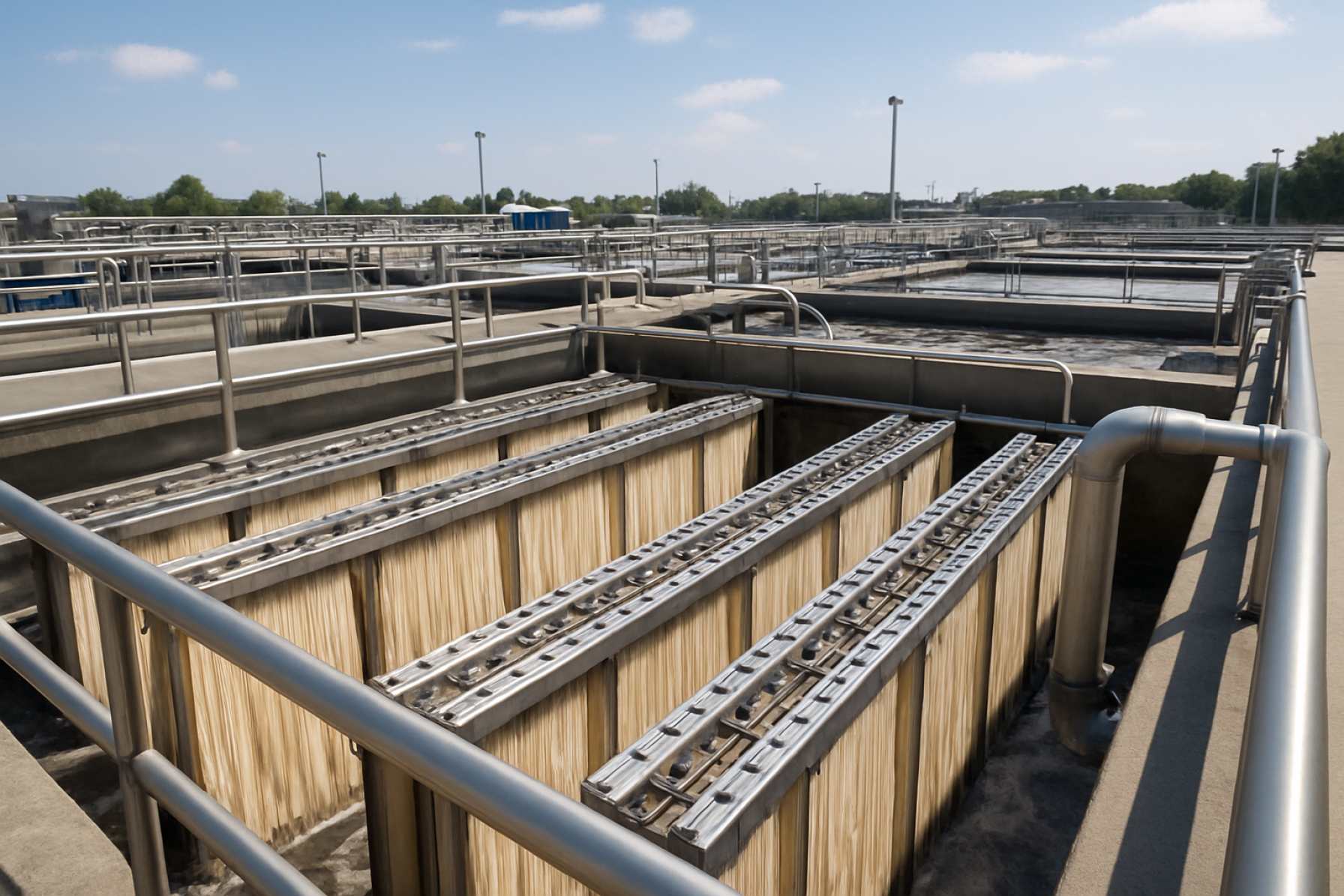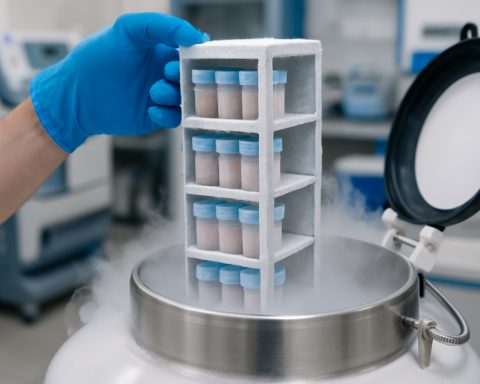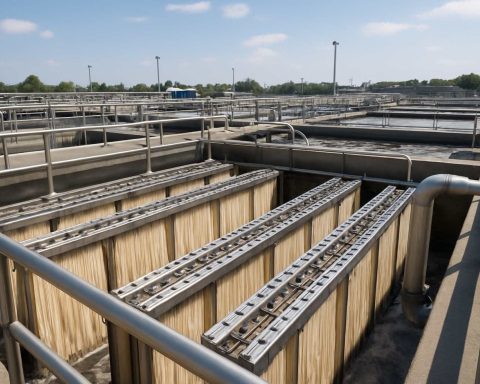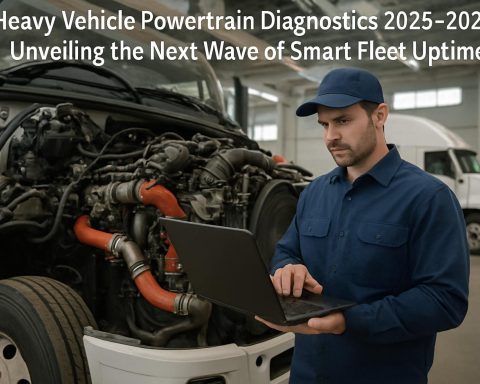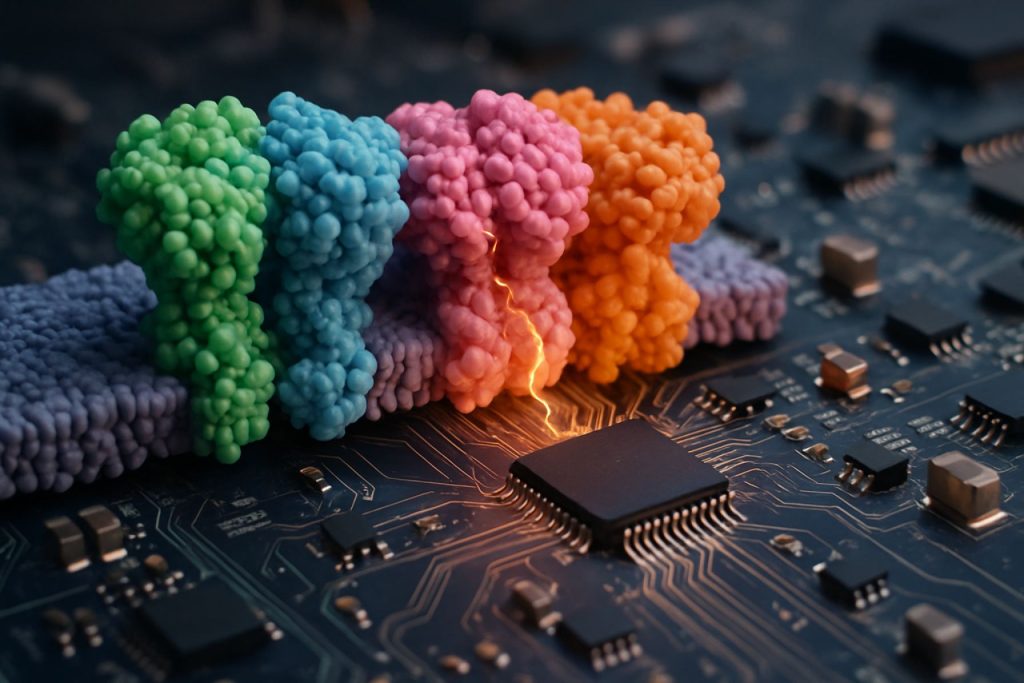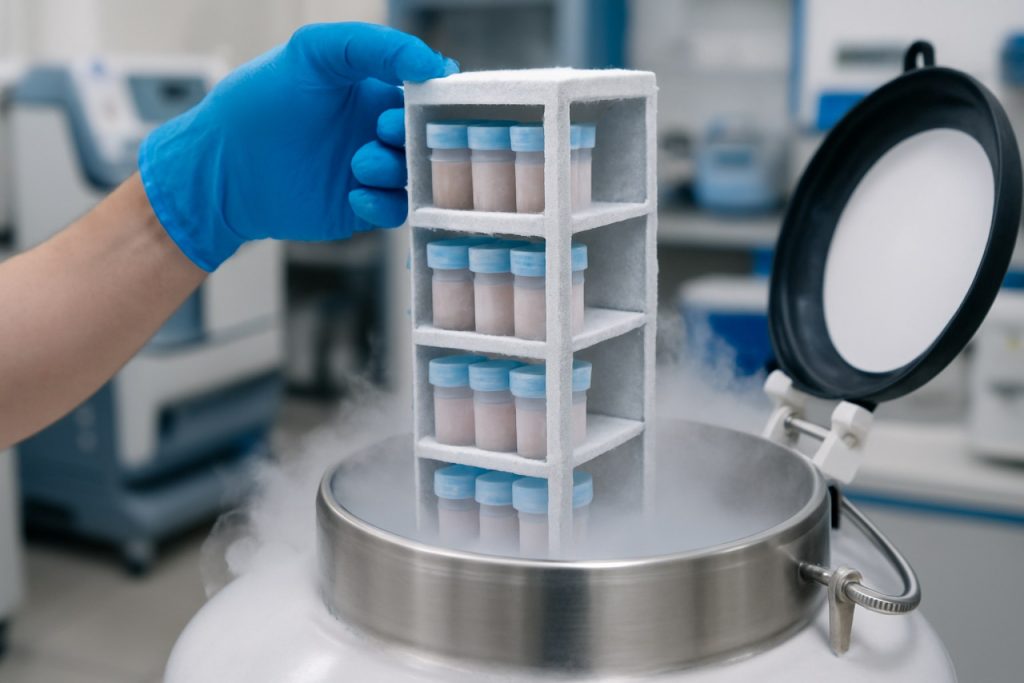Membrane Bioreactor Technology in 2025: Transforming Wastewater Treatment with Double-Digit Growth. Explore the Innovations, Market Dynamics, and Future Opportunities Shaping the Industry.
- Executive Summary: Key Findings & Market Highlights
- Market Overview: Defining Membrane Bioreactor Technology in 2025
- Global Market Size & Forecast (2025–2030): 12% CAGR and Revenue Projections
- Key Growth Drivers: Regulations, Urbanization, and Sustainability Demands
- Technological Innovations: Next-Gen Membranes, Automation, and Digital Integration
- Competitive Landscape: Leading Players, M&A, and Strategic Initiatives
- Regional Analysis: North America, Europe, Asia-Pacific, and Emerging Markets
- Application Segmentation: Municipal, Industrial, and Specialized Uses
- Challenges & Barriers: Cost, Fouling, and Operational Complexities
- Future Outlook: Disruptive Trends and Opportunities Through 2030
- Strategic Recommendations for Stakeholders
- Sources & References
Executive Summary: Key Findings & Market Highlights
Membrane Bioreactor (MBR) technology continues to gain momentum as a leading solution for advanced wastewater treatment, combining biological degradation with membrane filtration to deliver high-quality effluent suitable for reuse. In 2025, the global MBR market is characterized by robust growth, driven by increasing urbanization, stringent environmental regulations, and the rising demand for water recycling in both municipal and industrial sectors.
Key findings indicate that Asia-Pacific remains the fastest-growing region, propelled by large-scale infrastructure investments and government initiatives to address water scarcity and pollution. Notably, China and India are at the forefront, implementing MBR systems in new and upgraded wastewater treatment plants to meet evolving discharge standards. Europe and North America also demonstrate steady adoption, with a focus on retrofitting aging facilities and integrating MBRs for nutrient removal and water reuse applications.
Technological advancements are a major highlight, with leading manufacturers such as SUEZ Water Technologies & Solutions, Kubota Corporation, and Veolia Water Technologies introducing next-generation membrane modules that offer improved permeability, reduced fouling, and lower energy consumption. The integration of digital monitoring and automation is further enhancing operational efficiency and process control, making MBR systems more attractive for decentralized and small-scale applications.
Market trends reveal a shift towards hybrid systems, where MBRs are combined with other treatment technologies such as reverse osmosis and advanced oxidation processes to achieve even higher water quality standards. Additionally, the adoption of flat-sheet and hollow-fiber membrane configurations is expanding, catering to diverse project requirements and site constraints.
Despite higher initial capital costs compared to conventional activated sludge processes, the long-term benefits of MBR technology—including compact footprint, superior effluent quality, and reduced sludge production—are driving widespread acceptance. Support from organizations like the Water Environment Federation and International Water Association is fostering knowledge exchange and best practices, further accelerating market growth.
In summary, 2025 marks a pivotal year for membrane bioreactor technology, with innovation, regulatory support, and sustainability imperatives positioning MBRs as a cornerstone of modern water management strategies worldwide.
Market Overview: Defining Membrane Bioreactor Technology in 2025
Membrane Bioreactor (MBR) technology represents a significant advancement in wastewater treatment, combining conventional biological treatment processes with membrane filtration. By 2025, MBR systems are increasingly recognized for their ability to deliver high-quality effluent suitable for water reuse, driven by tightening environmental regulations and growing water scarcity concerns. The core of MBR technology lies in integrating a suspended growth biological reactor—typically an activated sludge process—with a membrane filtration unit, which can be either microfiltration or ultrafiltration. This configuration allows for the effective separation of solids and microorganisms from treated water, resulting in a compact footprint and superior effluent quality compared to traditional methods.
The global market for MBR technology is experiencing robust growth, propelled by urbanization, industrial expansion, and the need for sustainable water management solutions. Municipalities and industries are increasingly adopting MBR systems to meet stringent discharge standards and to facilitate water recycling initiatives. Notably, the technology is being deployed in both new installations and as retrofits to upgrade existing wastewater treatment plants, offering flexibility and scalability. Key players in the sector, such as SUEZ, Veolia, and Kubota Corporation, continue to innovate, focusing on energy efficiency, membrane durability, and operational simplicity.
By 2025, advancements in membrane materials and module design are further reducing operational costs and membrane fouling, historically a major challenge for MBR systems. The integration of digital monitoring and automation, as promoted by companies like GEA Group, is enhancing process control and reliability. Additionally, the adoption of MBR technology is expanding beyond traditional municipal and industrial wastewater treatment to include applications in decentralized systems, water reuse for irrigation, and even potable water production in water-stressed regions.
Overall, the 2025 market landscape for membrane bioreactor technology is characterized by innovation, regulatory support, and a growing recognition of the need for advanced water treatment solutions. As the technology matures, MBR systems are poised to play a pivotal role in global efforts to achieve sustainable water management and environmental protection.
Global Market Size & Forecast (2025–2030): 12% CAGR and Revenue Projections
The global membrane bioreactor (MBR) technology market is poised for robust growth between 2025 and 2030, driven by increasing demand for advanced wastewater treatment solutions, tightening environmental regulations, and rapid urbanization. MBR systems, which integrate membrane filtration with biological wastewater treatment, are increasingly favored for their ability to produce high-quality effluent suitable for reuse and discharge in compliance with stringent standards.
According to industry analyses, the MBR market is projected to expand at a compound annual growth rate (CAGR) of approximately 12% during the forecast period. This sustained growth is underpinned by rising investments in municipal and industrial wastewater infrastructure, particularly in regions facing water scarcity and pollution challenges. The Asia-Pacific region is expected to lead the market, with significant contributions from China, India, and Southeast Asian countries, where urban population growth and industrialization are accelerating the adoption of advanced water treatment technologies.
Revenue projections for the global MBR market indicate that the sector could reach a value of USD 6–7 billion by 2030, up from an estimated USD 3 billion in 2025. This growth trajectory is supported by ongoing technological advancements, such as the development of more energy-efficient and fouling-resistant membranes, as well as the integration of digital monitoring and automation for optimized plant operations. Key industry players, including SUEZ, Veolia, and Kubota Corporation, are investing in research and development to enhance system performance and reduce operational costs, further stimulating market expansion.
In addition to municipal applications, the industrial sector—particularly food and beverage, pharmaceuticals, and chemicals—is expected to drive significant demand for MBR systems due to stricter discharge regulations and the need for water reuse. Government initiatives promoting sustainable water management and the circular economy are also anticipated to play a pivotal role in market growth. As a result, the MBR technology market is set to experience dynamic expansion, with both established and emerging players capitalizing on the increasing global emphasis on water quality and resource efficiency.
Key Growth Drivers: Regulations, Urbanization, and Sustainability Demands
The membrane bioreactor (MBR) technology market is experiencing robust growth, propelled by a convergence of regulatory, urbanization, and sustainability factors. Stringent environmental regulations are a primary driver, as governments worldwide enforce tighter discharge standards for municipal and industrial wastewater. For instance, the United States Environmental Protection Agency and the European Commission Directorate-General for Environment have both implemented rigorous effluent quality requirements, compelling utilities and industries to adopt advanced treatment solutions like MBRs to achieve compliance.
Rapid urbanization is another significant catalyst. As cities expand, the demand for efficient, space-saving wastewater treatment intensifies. MBR systems, which combine biological treatment with membrane filtration, offer a compact footprint and high-quality effluent, making them ideal for urban settings where land availability is limited. Urban growth in regions such as Asia-Pacific and the Middle East is particularly notable, with governments and municipalities investing in decentralized and retrofit solutions to address increasing wastewater volumes.
Sustainability imperatives are also shaping the adoption of MBR technology. The global push for water reuse and resource recovery aligns with the capabilities of MBRs, which produce effluent suitable for non-potable applications such as irrigation, industrial processes, and groundwater recharge. Organizations like the United Nations Environment Programme and the Water.org advocate for sustainable water management practices, further encouraging the deployment of advanced treatment technologies. Additionally, MBRs support circular economy initiatives by enabling nutrient recovery and reducing sludge production compared to conventional systems.
In summary, the interplay of regulatory compliance, urban infrastructure demands, and sustainability goals is accelerating the global adoption of membrane bioreactor technology. As these drivers intensify through 2025 and beyond, MBRs are poised to play a pivotal role in modern wastewater management strategies.
Technological Innovations: Next-Gen Membranes, Automation, and Digital Integration
Technological advancements are rapidly transforming membrane bioreactor (MBR) technology, making it more efficient, cost-effective, and adaptable for diverse wastewater treatment applications. One of the most significant innovations is the development of next-generation membranes. These advanced membranes, often constructed from novel materials such as modified polyvinylidene fluoride (PVDF) or incorporating nanomaterials, offer enhanced permeability, fouling resistance, and mechanical strength. For example, research and pilot projects supported by Toray Industries, Inc. and Kubota Corporation have demonstrated that these membranes can significantly reduce operational costs and extend membrane lifespan, addressing one of the primary challenges in MBR systems.
Automation is another key area of innovation. Modern MBR facilities are increasingly equipped with advanced process control systems that utilize real-time data to optimize aeration, membrane cleaning cycles, and sludge management. Companies like SUEZ Water Technologies & Solutions and Veolia Water Technologies have integrated smart sensors and programmable logic controllers (PLCs) into their MBR offerings, enabling operators to minimize energy consumption and chemical usage while maintaining high effluent quality. These automated systems not only improve operational efficiency but also reduce the need for manual intervention, lowering labor costs and the risk of human error.
Digital integration is further propelling the evolution of MBR technology. The adoption of Industrial Internet of Things (IIoT) platforms and cloud-based monitoring tools allows for remote supervision, predictive maintenance, and data-driven decision-making. For instance, Xylem Inc. and GEA Group AG are leveraging digital twins and machine learning algorithms to simulate plant performance, forecast membrane fouling events, and recommend proactive interventions. This digital transformation enhances system reliability, extends asset life, and supports compliance with increasingly stringent regulatory standards.
Collectively, these technological innovations are positioning MBR technology as a cornerstone of sustainable wastewater management in 2025 and beyond. By combining next-gen membranes, automation, and digital integration, industry leaders are delivering solutions that are not only more robust and scalable but also aligned with the goals of resource recovery and environmental stewardship.
Competitive Landscape: Leading Players, M&A, and Strategic Initiatives
The competitive landscape of membrane bioreactor (MBR) technology in 2025 is characterized by the presence of several global leaders, ongoing mergers and acquisitions (M&A), and a focus on strategic initiatives to address evolving market demands. Major players such as SUEZ, Veolia, Kubota Corporation, and Toray Industries, Inc. continue to dominate the sector, leveraging their extensive portfolios and global reach to secure large-scale municipal and industrial contracts. These companies invest heavily in research and development to enhance membrane durability, reduce operational costs, and improve energy efficiency, which are critical differentiators in the market.
M&A activity remains robust as companies seek to expand their technological capabilities and geographic presence. For example, SUEZ’s acquisition of GE Water & Process Technologies in recent years has strengthened its position in the advanced water treatment segment, while Veolia has pursued strategic partnerships and acquisitions to broaden its MBR offerings and service networks. These moves are often aimed at integrating complementary technologies, such as advanced biological treatment and digital monitoring solutions, to deliver more comprehensive water management systems.
Strategic initiatives among leading players increasingly focus on sustainability and digitalization. Companies like Kubota Corporation and Toray Industries, Inc. are developing next-generation membranes with lower fouling rates and higher flux, addressing key operational challenges in MBR systems. Additionally, digital platforms for remote monitoring and predictive maintenance are being integrated to optimize plant performance and reduce downtime. Collaborations with local utilities and governments are also common, as firms aim to tailor solutions to regional regulatory requirements and water scarcity challenges.
Overall, the competitive landscape in 2025 is marked by consolidation, innovation, and a shift toward integrated, sustainable solutions. The leading players’ ability to adapt to regulatory changes, invest in R&D, and form strategic alliances will continue to shape the evolution of the MBR technology market.
Regional Analysis: North America, Europe, Asia-Pacific, and Emerging Markets
The global membrane bioreactor (MBR) technology market demonstrates significant regional variation, shaped by regulatory frameworks, industrialization levels, and water scarcity challenges. In North America, particularly the United States and Canada, MBR adoption is driven by stringent wastewater discharge regulations and the need for advanced treatment in both municipal and industrial sectors. The U.S. Environmental Protection Agency’s focus on nutrient removal and water reuse has spurred investments in MBR systems for both new and retrofit projects, especially in water-stressed regions such as California and Texas.
In Europe, the market is propelled by the European Union’s Urban Waste Water Treatment Directive and ambitious circular economy goals. Countries like Germany, France, and the Netherlands have pioneered the integration of MBRs in municipal wastewater treatment plants to achieve high effluent quality and facilitate water reuse. The region’s emphasis on sustainability and resource recovery further supports the deployment of MBRs in industrial applications, including food and beverage, pharmaceuticals, and chemicals.
The Asia-Pacific region is experiencing the fastest growth in MBR technology adoption, led by China, Japan, and South Korea. Rapid urbanization, industrial expansion, and acute water scarcity in many areas have made advanced wastewater treatment a priority. China’s government, through the Ministry of Ecology and Environment, has implemented strict discharge standards and incentivized the construction of large-scale MBR plants, particularly in megacities and industrial parks. Japan, a pioneer in membrane technology, continues to innovate in compact and energy-efficient MBR systems for both municipal and decentralized applications.
Emerging markets in Latin America, the Middle East, and Africa are gradually adopting MBR technology, primarily in response to growing urban populations and the need for reliable water reuse solutions. In the Middle East, organizations such as Dubai Electricity and Water Authority are investing in MBR-based desalination and wastewater recycling projects to address chronic water shortages. While initial capital costs remain a barrier, international funding and technology transfer are facilitating pilot projects and gradual market entry in these regions.
Overall, regional dynamics in the MBR market reflect a convergence of regulatory pressure, water scarcity, and technological innovation, with Asia-Pacific poised for the most robust expansion through 2025.
Application Segmentation: Municipal, Industrial, and Specialized Uses
Membrane bioreactor (MBR) technology has become a pivotal solution in modern wastewater treatment, with its applications segmented into municipal, industrial, and specialized uses. Each segment leverages the core advantages of MBR—compact footprint, high effluent quality, and operational flexibility—tailored to distinct requirements and regulatory standards.
Municipal Applications: Municipalities increasingly adopt MBR systems to address growing urban populations and stringent discharge regulations. MBRs enable the production of high-quality effluent suitable for water reuse, supporting initiatives in water-scarce regions and urban centers. The technology’s ability to retrofit existing plants and its resilience to hydraulic and organic load fluctuations make it attractive for city-scale wastewater management. Leading suppliers such as SUEZ Water Technologies & Solutions and Veolia Water Technologies provide modular MBR solutions for municipal clients, facilitating phased capacity expansions and compliance with evolving environmental standards.
Industrial Applications: In the industrial sector, MBRs are deployed to treat complex effluents from food and beverage, pharmaceuticals, textiles, and petrochemicals. These industries benefit from MBR’s superior removal of organic and inorganic contaminants, as well as its ability to handle variable influent characteristics. For example, Kubota Corporation offers MBR systems specifically engineered for industrial wastewater, emphasizing energy efficiency and membrane durability. The closed-loop water recycling enabled by MBRs also supports corporate sustainability goals and reduces freshwater consumption.
Specialized Uses: Beyond conventional municipal and industrial settings, MBR technology finds application in niche areas such as decentralized wastewater treatment, remote communities, and water reuse in commercial buildings. Compact, containerized MBR units from companies like Toray Industries, Inc. are deployed in resorts, mining camps, and disaster relief operations, where rapid installation and reliable performance are critical. Additionally, MBRs are increasingly used in water reclamation projects, producing effluent suitable for irrigation, industrial processes, or even indirect potable reuse.
In summary, the segmentation of MBR applications reflects the technology’s adaptability and its growing role in sustainable water management across diverse sectors. As regulatory pressures and water scarcity intensify, the adoption of MBR systems is expected to expand further in 2025 and beyond.
Challenges & Barriers: Cost, Fouling, and Operational Complexities
Membrane Bioreactor (MBR) technology has emerged as a leading solution for advanced wastewater treatment, combining biological degradation with membrane filtration. However, its broader adoption faces several significant challenges and barriers, particularly in the areas of cost, membrane fouling, and operational complexities.
Cost remains a primary concern for utilities and industries considering MBR implementation. The initial capital investment for MBR systems is typically higher than for conventional activated sludge processes, largely due to the expense of membrane modules and the need for specialized infrastructure. Additionally, operational costs are elevated by the energy required for membrane aeration and cleaning, as well as periodic membrane replacement. According to SUEZ Water Technologies & Solutions, membrane replacement can account for a significant portion of lifecycle costs, making economic feasibility a key consideration, especially for small- to medium-sized facilities.
Membrane fouling is another persistent barrier, impacting both performance and cost. Fouling occurs when particulates, colloids, or biological matter accumulate on the membrane surface, reducing permeability and necessitating frequent cleaning or backwashing. This not only increases chemical and energy consumption but also shortens membrane lifespan. Research and industry experience, such as that shared by KUBOTA Corporation, highlight the need for ongoing innovation in membrane materials and cleaning protocols to mitigate fouling and maintain stable operation.
Operational complexities further complicate MBR adoption. The technology requires skilled operators to manage the biological and filtration processes, monitor membrane integrity, and respond to process upsets. Automation and advanced control systems, as offered by companies like Veolia Water Technologies, can help streamline operations, but they also introduce additional layers of technical complexity and maintenance requirements. Smaller utilities may lack the resources or expertise to manage these systems effectively, posing a barrier to widespread deployment.
In summary, while MBR technology offers superior effluent quality and compact footprint, its adoption is tempered by high costs, fouling challenges, and operational demands. Addressing these barriers through technological innovation, operator training, and cost reduction strategies will be critical for the continued growth of MBR applications in 2025 and beyond.
Future Outlook: Disruptive Trends and Opportunities Through 2030
Looking toward 2030, membrane bioreactor (MBR) technology is poised for significant transformation, driven by disruptive trends and emerging opportunities. One of the most prominent trends is the integration of digitalization and smart monitoring systems. Advanced sensors, real-time data analytics, and artificial intelligence are increasingly being incorporated into MBR operations, enabling predictive maintenance, process optimization, and energy efficiency improvements. This digital shift is supported by initiatives from organizations such as GE Water & Process Technologies and Veolia Water Technologies, which are developing intelligent water management platforms.
Another key trend is the evolution of membrane materials. Research is focused on next-generation membranes with enhanced fouling resistance, higher permeability, and longer operational lifespans. Innovations in nanomaterials and surface modification techniques are expected to reduce operational costs and improve reliability. Companies like Toray Industries, Inc. and SUEZ Water Technologies & Solutions are at the forefront of these advancements, investing in R&D to commercialize more robust and efficient membranes.
Decentralized and modular MBR systems are also gaining traction, particularly for small communities, industrial parks, and remote locations. These compact systems offer flexibility, scalability, and rapid deployment, addressing the growing demand for on-site wastewater treatment and water reuse. The push for water circularity and stricter discharge regulations, especially in water-stressed regions, is expected to accelerate adoption. Organizations such as Xylem Inc. are actively promoting decentralized solutions tailored to diverse end-user needs.
Sustainability and resource recovery are emerging as central themes. MBRs are increasingly being integrated with processes for nutrient recovery, biogas production, and advanced oxidation, transforming wastewater treatment plants into resource recovery facilities. This aligns with the circular economy goals championed by entities like the International Water Association (IWA).
By 2030, the convergence of digitalization, advanced materials, modularization, and sustainability is expected to redefine the MBR landscape. These disruptive trends will not only enhance operational efficiency and reduce costs but also open new markets and applications, positioning MBR technology as a cornerstone of future-proof water and wastewater management strategies.
Strategic Recommendations for Stakeholders
As membrane bioreactor (MBR) technology continues to evolve and gain traction in wastewater treatment, stakeholders—including utilities, municipal authorities, private operators, technology providers, and regulators—must adopt strategic approaches to maximize benefits and address emerging challenges. The following recommendations are tailored to guide stakeholders in 2025 and beyond:
- Invest in Advanced Membrane Materials: Stakeholders should prioritize the adoption of next-generation membranes with enhanced fouling resistance, higher permeability, and longer operational lifespans. Collaborating with leading manufacturers such as SUEZ Water Technologies & Solutions and Kubota Corporation can facilitate access to cutting-edge materials and module designs.
- Embrace Digitalization and Automation: Integrating digital monitoring, data analytics, and automated process control can optimize MBR performance, reduce operational costs, and enable predictive maintenance. Utilities should consider partnerships with technology providers like Xylem Inc. to implement smart water management solutions.
- Focus on Energy Efficiency: Energy consumption remains a key concern for MBR systems. Stakeholders should invest in energy-efficient aeration systems, variable frequency drives, and process optimization tools to minimize energy use, aligning with sustainability goals and regulatory requirements from organizations such as the U.S. Environmental Protection Agency.
- Promote Regulatory Alignment and Standardization: Engaging with regulatory bodies to develop clear guidelines and standards for MBR implementation will facilitate wider adoption and ensure compliance. Active participation in initiatives led by the International Water Association can help shape best practices and harmonize regulations.
- Encourage Public-Private Partnerships (PPPs): Leveraging PPPs can accelerate project development, share financial risks, and foster innovation. Municipalities and private operators should explore collaborative models to finance and operate MBR facilities, drawing on the expertise of established industry players.
- Prioritize Training and Capacity Building: Continuous training for plant operators and engineers is essential to ensure optimal system performance and safety. Stakeholders should invest in educational programs and certifications offered by organizations such as the Water Environment Federation.
By implementing these strategic recommendations, stakeholders can enhance the efficiency, sustainability, and scalability of membrane bioreactor technology, positioning themselves at the forefront of advanced wastewater treatment in 2025 and beyond.
Sources & References
- Kubota Corporation
- Water Environment Federation
- International Water Association
- SUEZ
- Veolia
- GEA Group
- European Commission Directorate-General for Environment
- United Nations Environment Programme
- Water.org
- Toray Industries, Inc.
- Asia-Pacific
- Dubai Electricity and Water Authority
- GE Water & Process Technologies
- International Water Association (IWA)
